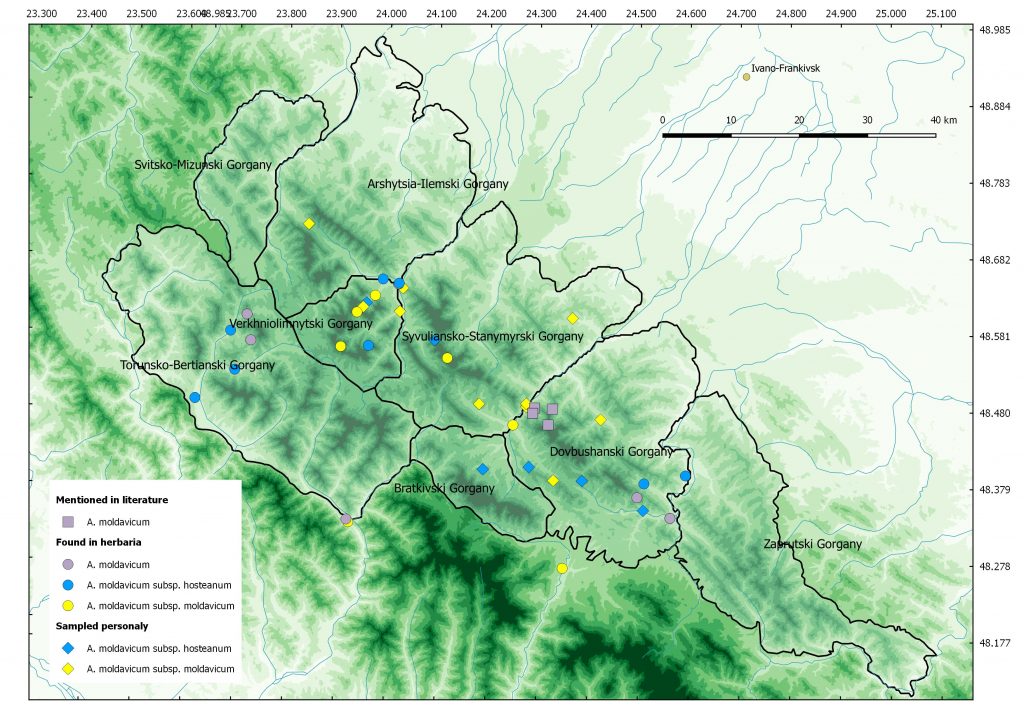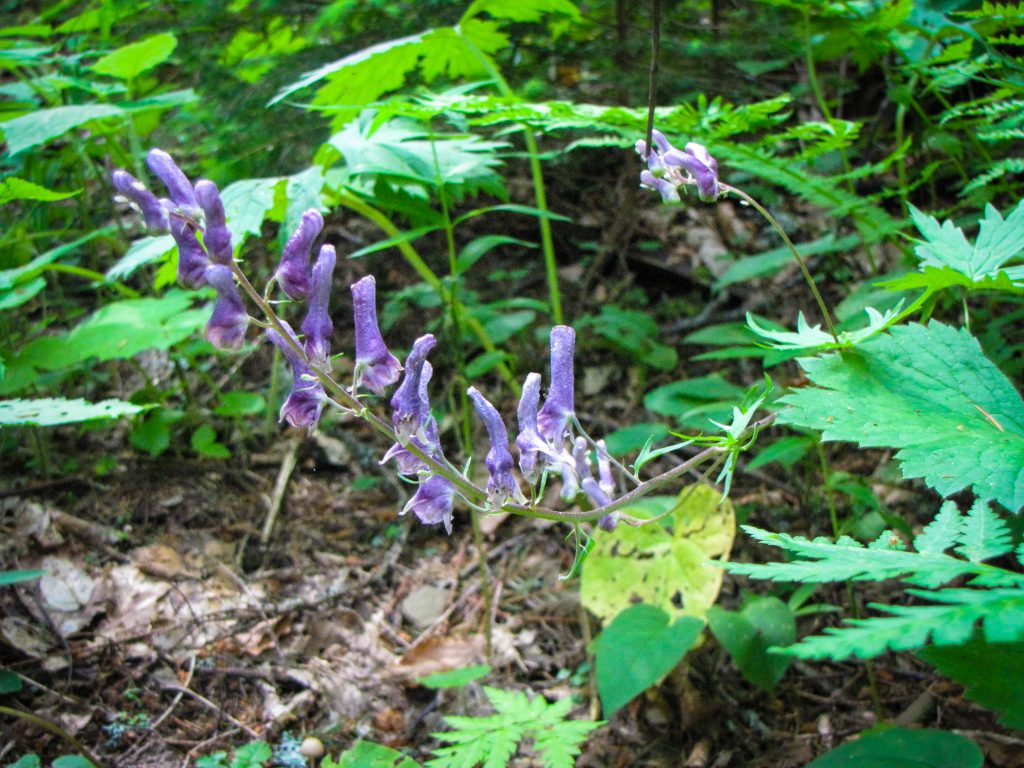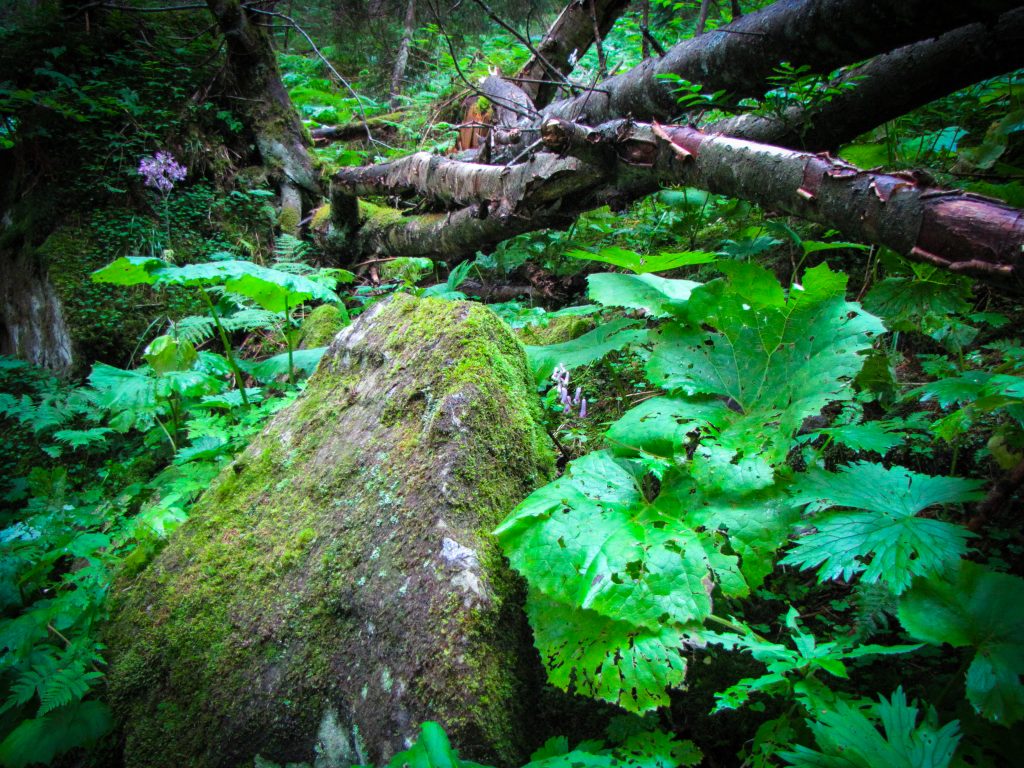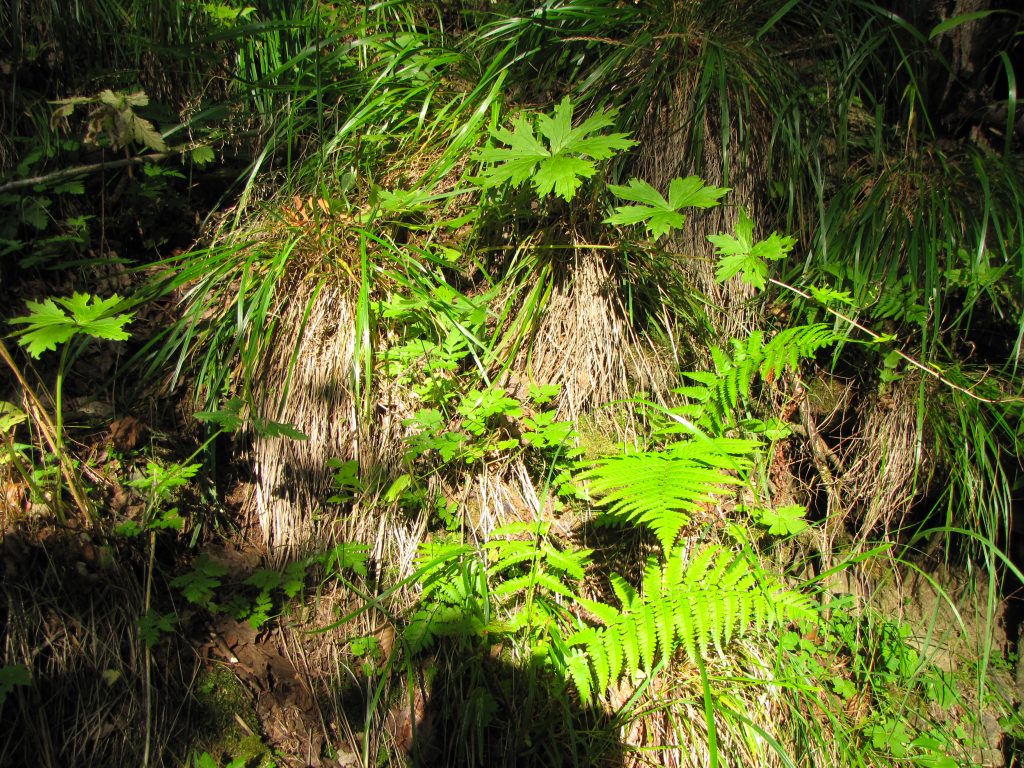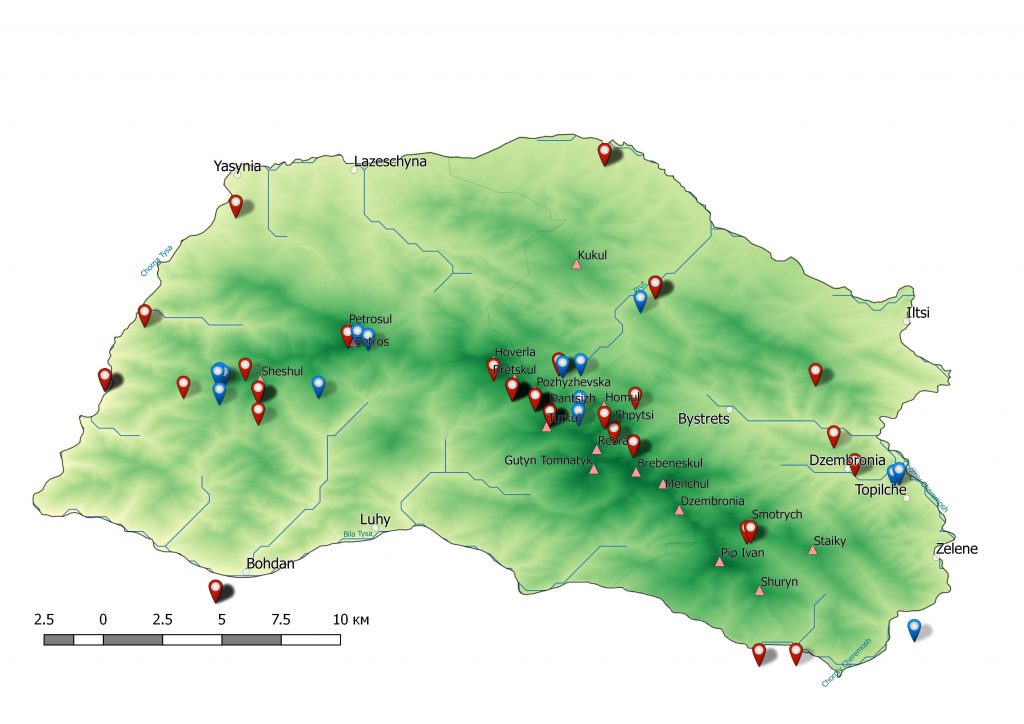Ecological preferences: Sciophytes or helio-sciophytes; hygrophytes or hygromesophytes, rarely – hygro-helophytes; from basiphils up to hyperacidophils.
Distribution and habitats in Ukrainian Carpathians: These plants are widely distributed in Ukrainian Carpathians, especially on low altitudes; however they also occur up to subalpine belt. They prefer wet and semi-shaded locations, especially in forests along the streams. However they also can be found on open places far away from water. The last plans differ by short and compact habitus, mostly ortotropic position of the shoot, lower number of flowers in unbranched or very slightly branched inflorescences, as well as more dark color of flowers. These plants have the widest ecological amplitude and very often can be found along the roads, in mountain villages, in forest fringes etc. From other side, this species do not make big populations with numerous plants, mostly there are few plants separated by comparatively big distances. In Ukrainian Carpathians this species occurs in all regions. In general there are information about participation of A. moldavicum in Pulmonario - Alnetum viridis, Juniperetum sibiricae, Calthetum laetae, and Ranunculo platanifolii - Adenostyletum alliariae communities.
Distribution and habitats in Chornogora: In Chornohora Mts. this species is mostly represented by subsp. moldavicum and subsp. hosteanum which form a lot of small local populations. These two subspcies commonly are represented by several hundreds of generative and postgenerative plants. The condition of most populations is bad or near the normal because of low number of plants. They can be classified as regressive or rarely normal. These plants take a part in such communities as Pulmonario - Alnetum viridis, Juniperetum sibiricae, Calthetum laetae, Ranunculo platanifolii - Adenostyletum alliariae, and Calthion. They grow on very different soils including cambic leptosols, leptic cambisols, haplic cambisols, calcic fluvisols, and haplic fluvisol. There are also herbarium vouchers of nothosubsp. porcii from this region. However neither nothosubsp. porcii nor nothosubsp. simonkaianum (which probably could be refind too) were not observed during our expeditions on Chornohora.
Distribution and habitats in Gorgany: There are more than 60 entries describing the presence of A. moldavicum in Gorgany Mts., where it is represented by subsp. moldavicum and subsp. hosteanum. Other subspecies are not mentioned for Gorgany. It is widespread taxon, distributed mostly in lower altitudes along the roads, rivers and on the edges of forest. Condition of discovered populations is good, they are composed mostly by old generative and pregenerative individuals, rarely - by senile, with at least 2000 plants spead on more than 10 km2. The feature of A. moldavicum populations is that they are quite large but with very disjunctive and sparse distribution of plants. Plants very often are growing on the distance one from each other, and it looks like there are very few of them. Oftenly these plant grow in ruderal or disturbed places. They can occupy both sunny and dry places and shaddy forests, can be scattered along the rivers or grow on wood cuttings. So it looks that there no special ecological preferences for these plants. In Gorgany they are usually observed in associations of Adenostyletum alliariae, Fagion sylvaticae, Rubetum idaei, Arunco - Doronicetum austriaci, Stellario nemorum - Alnetum glutinosa, and Chaerophylletum aromaticum.
Threats: Confirmation of nothosubsp. porcii and nothosubsp. simonkaianum for Chornohora and evaluation of their chorology are necessary. These two subspecies require further investigations, and therefore deserve DD status. From other side, there are no any threats for subsp. moldavicum and subsp. hosteanum in Ukrainian Carpathians, and there no need for their protection in Ukrainian Carpathians, LC. I guess, small local or disjunctive populations, low number of plants with presence of long-lived senile individuals is a normal condition for this species.
